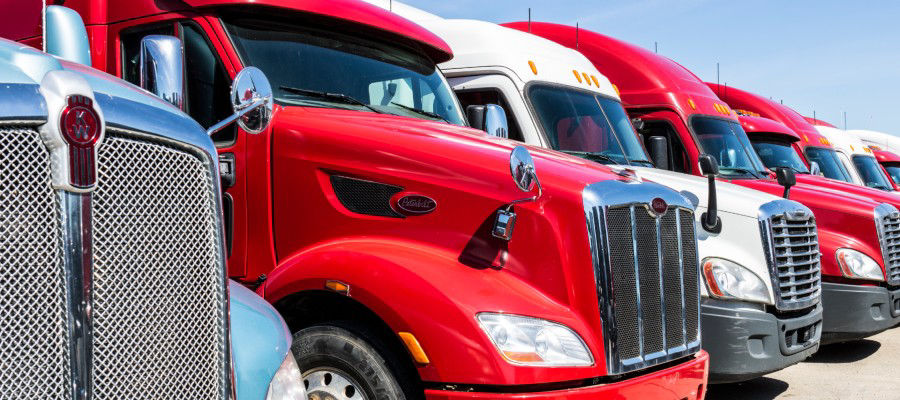Challenges and Solutions for Managing a Fleet During COVID-19 | Linxup GPS


Challenges and Solutions for Managing a Fleet During COVID-19 | Linxup GPS
Businesses that depend on their fleets are faced with a number of concerns as the COVID-19 pandemic continues. The new normal that we face in our day-to-day lives has forced many businesses to make changes to suit what’s best for the health of employees as well as what’s best for their bottom line.
We’ve partnered with Linxup GPS Tracking to address some of the particular challenges facing fleet-based businesses during this time. Telematics data can be helpful to small businesses managing remote workers, scattered vehicles and equipment, and challenging financial concerns.
We go over 5 key challenges and helpful solutions that work truck fleet businesses can solve for the short term, but also implement as long term improvements.
Challenge: Managing a fleet remotely

Being in charge of a fleet is a hands-on job, but a pandemic changes every aspect of it. Fleet managers are now faced with overseeing their business remotely and keeping an eye on each vehicle and driver as they travel to and from each jobsite. GPS technology allows managers to see where specific vehicles are throughout the day and how long each job is taking. A solution that also includes dispatch and messaging functionality can improve communication remotely—particularly when paired with a mobile app—and make it easier to respond to emergency requests from customers. Knowing what’s going on with your fleet at all times brings relief when circumstances are uncertain.
Challenge: Preventative maintenance

The amount of work each fleet is getting during the pandemic varies greatly. Depending on whether your business is seeing a decrease in deliveries to non-essential businesses or an increase in call volume due to high demand, fleet vehicles are either being overworked or underutilized.
Having a preventative maintenance schedule in place gives fleet businesses a break when it comes to costly mechanic bills or unexpected vehicle breakdowns. Fleets are serviced right when they need to be and vehicles that aren’t used as much are still getting the proper maintenance that they need. GPS data tracking daily or weekly use and mileage can also highlight vehicles that might be in danger of dead or damaged batteries from underuse.
During this time, keep your vehicles in the best condition by:
- Starting and running vehicles that haven’t been used in at least two weeks.
- Checking vehicles for upcoming service needs, such as oil changes or tire rotations.
- Making sure employees are establishing and continuing safe driving practices to reduce wear and tear on vehicles and dangers to themselves.
Challenge: Ensuring health and safety of drivers
As drivers go about their daily routines providing services to customers, it’s more important now than ever to ensure that each employee is maintaining a safe and healthy routine. Social distancing is required to slow the spread of COVID-19, even when the job calls for interacting with customers. Taking the virus seriously is necessary to keep everyone safe.
Sanitizing vehicles
Each employee should put the cleanliness of their vehicle and work environment first. When going to and from different locations on a typical route, it’s important to:

- Wipe down door handles before entering a vehicle and upon leaving a jobsite.
- Sanitize the steering wheel once you reenter the vehicle.
- Disinfect each commonly touched surface within the vehicle.
Employee hygiene
Masks are now often required when going to different locations throughout the day. In addition to standing six feet away from others, you should also:
- Avoid people who are sick and present symptoms of the virus.
- Put on a face mask before leaving for a jobsite and/or having interactions with others.
- Avoid touching your face even when wearing a mask.

It’s crucial to remember to wash your hands before you put on your face mask and before you take the mask off to ensure the mask is free of lingering germs that may be on your hands and transferred to the mask.
Challenge: Tightening the bottom line
It’s likely that your business is affected by factors beyond your control right now. Deliveries to retail customers might be on hold indefinitely. Consumer customers may be fearful of allowing service providers into their homes. With an uncertain end to the current crisis, many businesses are taking a closer look at their own books and thinking about ways to cut back expenses. Small changes now can make a significant impact:
- Use GPS data to take a look at common destinations and see if there are more optimal routes that can save time and fuel.
- Take this time to see how your drivers are behaving on the road. Speeding and idling can really increase fuel costs.
- Speaking of idling — check your state’s regulations. Some offer tax credits for implementing idle reduction solutions.
- Set alerts for after hours use. If drivers are now taking work vehicles home for social distancing, make sure they are not being used for personal reasons after work.
Challenge: Uncertainty of the future
Pandemics provide unpredictability to businesses as delivery and service volumes fluctuate depending on need. Some fleets have fewer routes to run for certain businesses/customers while others have an abundance of jobs to fulfill. Many fleets are learning as they go when it comes to dealing with the precautions to take during the COVID-19 pandemic. Keep in mind that policies will adapt and changes will need to be made as more is learned about the virus and how it has an impact on society. The lessons learned during this pandemic will be helpful in making your business thrive if another crisis were to occur.
Published on: April 17, 2020






